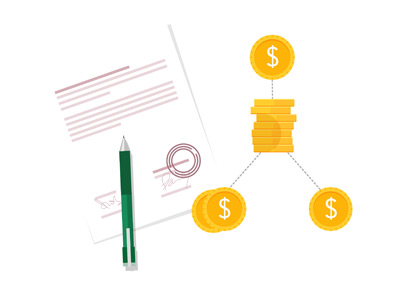Staking Agreements Usually Include Terms for Makeup, Division of Profits
Q: How Does a Typical Staking Arrangement Work?
A: Staking agreements are everywhere in the world of poker.
If you are watching a high buy-in poker tournament on television, especially one involving names that you recognize, you can be sure that a significant percentage of the players that are participating are playing in the tournament via staking deals.
There are different types of staking deals, and there can be all sorts of different terms to the deals.
For instance - there might be a staking arrangement that runs for just one tournament. Or, a staking agreement may last for an indefinite period of time.
 The staking arrangement terms for a single tournament are usually quite simple. The staker will put up the buy-in, while the person being staked will agree to play for 50% (or another agreed-upon percentage) of the profits, after the cost of the buy-in has been returned to the backer.
The staking arrangement terms for a single tournament are usually quite simple. The staker will put up the buy-in, while the person being staked will agree to play for 50% (or another agreed-upon percentage) of the profits, after the cost of the buy-in has been returned to the backer. So, in this agreement, the backer would pay the $10,000 buy-in. If the person being staked ends up cashing for $30,000, the backer would receive their $10,000 buy-in back, as well as half of the profits (an additional $10k), while the person being staked would walk away with $10,000 (half of the $20k in profit).
-
Now, what about a staking agreement that extends over a longer period of time?
In these agreements, "makeup" becomes an important concept.
Let's say that a person agrees to get staked for an extended period of time. 100% of their online buy-ins will be covered, with the two sides agreeing to split the profits.
Now, what happens if the person being staked loses $100,000 in total buy-ins and then binks a first place prize of $50,000?
This is where makeup comes in, as it wouldn't be fair to the person doing the staking if the two sides split the $50,000 in profit evenly, as the backer would still be down $75,000 in buy-ins.
In this case, the person being staked would likely have to "make up" some or all of their losses. So, the two sides may decide that the backer will receive $45,000 of the $50,000, while the person being staked would receive $5,000 in order to cover their living expenses.
In this case, the person being staked would still have $55,000 in money to "make up" before they were able to get 50% of any profits.
-
The backers carry a great deal of risk in these agreements.
For instance, a player being staked may simply decide to walk away from the agreement, especially if the amount of makeup is too high. This is why it is important to get everything in writing, so that the backer has some sort of recourse if the person being staked doesn't fulfill their side of the agreement. Some staking agreements, for instance, have ended up in court.
Or, there are cases where a person being staked wins a tournament and then simply doesn't give up the backer's percentage of the win. This happens quite often, which is why it's important to properly vet the person being staked. Do they have a good reputation? Are other people able to vouch for them?
If a player decides to quit playing poker, the generally accepted rule is that the backer will need to accept the loss.
If a player decides to quit the stake but continue playing, while they are still in makeup, a buyout must be negotiated with the originally backer. Otherwise, the person being staked will develop a reputation as somebody who can't be trusted.
It is generally accepted that only a backer can end a stake if a player is in makeup (for instance, they feel that it will be a losing deal and don't want to continue). If there is no makeup, either party can end the agreement at any time.
If a backer ends a deal while the player being staked is in makeup, it is generally accepted that the player won't owe anything.
If a player being staked decides to quit poker while in makeup but ends up coming back, the generally accepted rule is that either:
1) The player must negotiate a buyout with the original backer
2) The backer has the first opportunity to continue staking the player
-
Staking agreements can also include allowances for living costs for the person being staked.
For instance, in return for agreeing to play as part of a "stable" (meaning, a group of staked players), the person being staked (aka the "horse"), may receive a monthly payment of $2,000 to pay for their living expenses.
In most cases, however, the person being staked is responsible for their own costs of living.
-
If you are entering a staking arrangement or will be serving as a backer, make sure that you get everything in writing prior to the agreement starting, as you will likely save yourself a big headache by doing so.
Back to Answers

